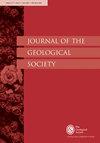Inversion of Late Miocene uplift history from the transient Daxia River landscape, NE Tibetan Plateau
IF 3
3区 地球科学
Q2 GEOSCIENCES, MULTIDISCIPLINARY
引用次数: 0
Abstract
The mechanisms of the upward and outwards growth of the Tibetan Plateau are crucial for understanding the geodynamic significance of Cenozoic continental collisions. Northeastern Tibet has been suggested as one of the youngest deforming and uplifting margins surrounding the plateau. The existence of fluvial knickpoints and low-relief topographic surfaces along the Yellow River and its tributaries indicate the transience of the landscape in response to active tectonic uplift. Therefore, the uplift history of the North Eastern Tibetan Plateau (NETP) can be potentially inverted from the disequilibrium channel profiles of the Yellow River and its tributaries. The West Qinling Fault (WQF) is part of the geomorphological and topographic boundaries of the NETP. Its uplift history helps explore the deformation history of the Tibetan Plateau. In this study, the focus was on the Daxia River (one of the Yellow River tributary) in order to identify the distribution of peneplain surfaces and knickpoints, and present a linear inversion on the fluvial longitudinal profiles for the relative uplift history of the West Qinling. We obtained a relative uplift history with two pulses of change in the uplift rates at ∼5 Ma and ∼2 Ma. Rates of relative uplift maintained low values during the Late Miocene, then slowly increased from 0.1 mm/a to 0.2 mm/a since ∼5 Ma and suddenly jumped to 0.3 mm/a at ∼2 Ma, consistent with recent findings on the deformation records in the NE Tibetan Plateau. We suggest that 1) the Late Miocene-Pliocene landscape evolution was driven by both tectonics and climate change and 2) inversion of the transient longitudinal channel profiles, if applied, may provide broader insights into the upward and outwards growth patterns of the NE Tibetan Plateau. Thematic collection: This article is part of the Mesozoic and Cenozoic tectonics, landscape and climate change collection available at: https://www.lyellcollection.org/topic/collections/mesozoic-and-cenozoic-tectonics-landscape-and-climate-change青藏高原东北部瞬变大夏河景观的晚中新世隆升史反演
青藏高原向上和向外生长的机制对于理解新生代大陆碰撞的地球动力学意义至关重要。西藏东北部被认为是青藏高原周围最年轻的变形和隆升边缘之一。黄河及其支流沿线河流断裂点和低起伏地形面的存在,表明黄河及其支流在活跃的构造隆升作用下景观的短暂性。因此,青藏高原东北段的隆升历史可以通过黄河及其支流的不平衡河道剖面进行反演。西秦岭断裂带是青藏高原的地貌和地形边界的一部分。它的隆升史有助于探索青藏高原的变形史。本文以黄河支流之一的大夏河为研究对象,确定了准平原面和断裂点的分布,并对西秦岭相对隆升历史的河流纵向剖面进行了线性反演。我们在~ 5 Ma和~ 2 Ma的隆升速率变化中获得了一个相对隆升历史。相对隆升速率在晚中新世保持低值,在~ 5 Ma后从0.1 mm/a缓慢上升至0.2 mm/a,在~ 2 Ma时突然上升至0.3 mm/a,这与青藏高原东北缘最近的形变记录一致。我们认为:1)晚中新世—上新世的景观演化是由构造和气候变化共同驱动的;2)瞬态纵向河道剖面的反演,如果应用,将对青藏高原东北缘向上和向外的生长模式提供更广泛的认识。专题文集:本文是中生代和新生代构造、景观和气候变化文集的一部分,可在https://www.lyellcollection.org/topic/collections/mesozoic-and-cenozoic-tectonics-landscape-and-climate-change上找到
本文章由计算机程序翻译,如有差异,请以英文原文为准。
求助全文
约1分钟内获得全文
求助全文
来源期刊

Journal of the Geological Society
地学-地球科学综合
CiteScore
6.00
自引率
3.70%
发文量
68
审稿时长
6-12 weeks
期刊介绍:
Journal of the Geological Society (JGS) is owned and published by the Geological Society of London.
JGS publishes topical, high-quality recent research across the full range of Earth Sciences. Papers are interdisciplinary in nature and emphasize the development of an understanding of fundamental geological processes. Broad interest articles that refer to regional studies, but which extend beyond their geographical context are also welcomed.
Each year JGS presents the ‘JGS Early Career Award'' for papers published in the journal, which rewards the writing of well-written, exciting papers from early career geologists.
The journal publishes research and invited review articles, discussion papers and thematic sets.
 求助内容:
求助内容: 应助结果提醒方式:
应助结果提醒方式:


